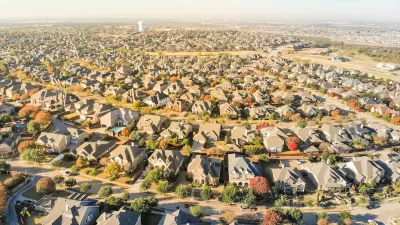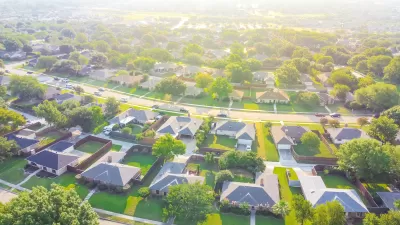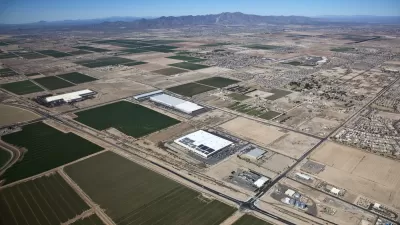A new book explains how suburban dwellers have built "zoning rules, housing covenants and other mechanisms" to protect "their privileged place in the residential pecking order."

Robert McCartney provides insight into a new book by Ben Ross, Dead End: Suburban Sprawl and the Rebirth of American Urbanism. Ross, a scientist by profession, "led the grass-roots campaign for the light-rail Purple Line in the Maryland suburbs for 15 years."
The book, according to McCartney, "is drawing praise for its well-researched analysis of why so many Americans live in widely dispersed, single-family homes and spend so many hours stuck in traffic."
"It also casts light on the cultural forces at play in major disputes gripping our region over affordable housing, the 'war on cars,' the Columbia Pike streetcar in Arlington, and the redevelopment of White Flint in Montgomery and Tysons Corner in Fairfax County."
McCartney focuses on Ross's argument that sprawl is a symptom of status-seeking obstructionists, or NIMBYs, who protect their interests with a system of "snob zoning."
Robert Steuteville also produced a detailed review of Dead End, calling it "the shrewdest book on the psychology of the built environment that I have read in a long time."
FULL STORY: New book by Purple Line activist Ben Ross blames suburban sprawl on status-seeking

Alabama: Trump Terminates Settlements for Black Communities Harmed By Raw Sewage
Trump deemed the landmark civil rights agreement “illegal DEI and environmental justice policy.”

Study: Maui’s Plan to Convert Vacation Rentals to Long-Term Housing Could Cause Nearly $1 Billion Economic Loss
The plan would reduce visitor accommodation by 25% resulting in 1,900 jobs lost.

Planetizen Federal Action Tracker
A weekly monitor of how Trump’s orders and actions are impacting planners and planning in America.

Wind Energy on the Rise Despite Federal Policy Reversal
The Trump administration is revoking federal support for renewable energy, but demand for new projects continues unabated.

Passengers Flock to Caltrain After Electrification
The new electric trains are running faster and more reliably, leading to strong ridership growth on the Bay Area rail system.

Texas Churches Rally Behind ‘Yes in God’s Back Yard’ Legislation
Religious leaders want the state to reduce zoning regulations to streamline leasing church-owned land to housing developers.
Urban Design for Planners 1: Software Tools
This six-course series explores essential urban design concepts using open source software and equips planners with the tools they need to participate fully in the urban design process.
Planning for Universal Design
Learn the tools for implementing Universal Design in planning regulations.
Caltrans
Smith Gee Studio
Institute for Housing and Urban Development Studies (IHS)
City of Grandview
Harvard GSD Executive Education
Toledo-Lucas County Plan Commissions
Salt Lake City
NYU Wagner Graduate School of Public Service





























